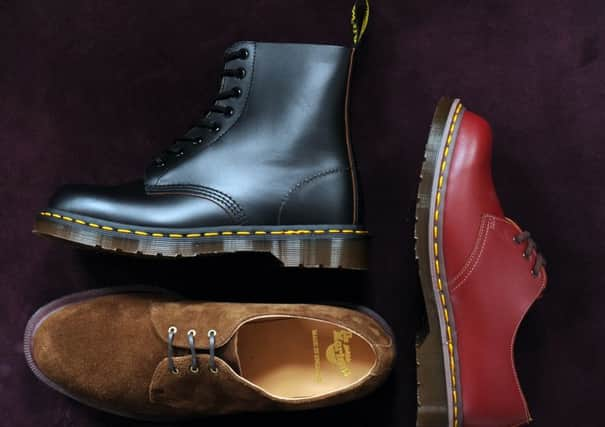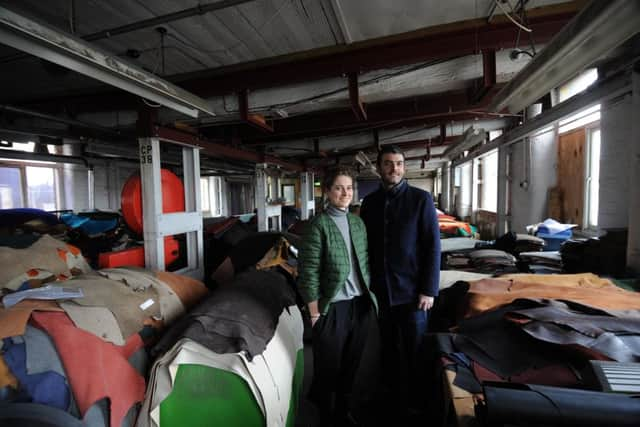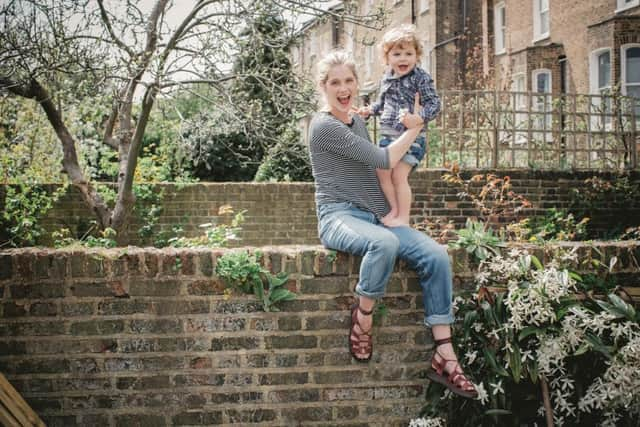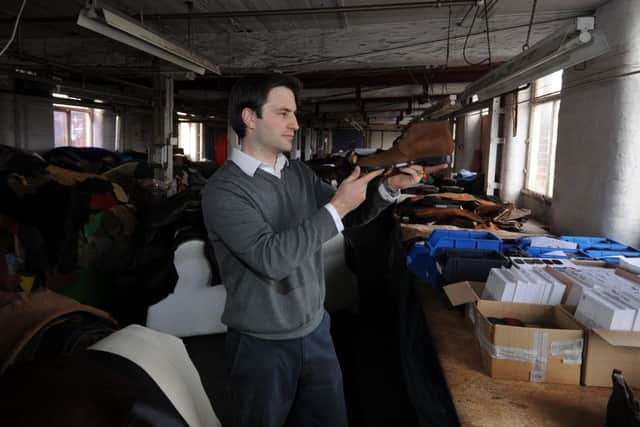Fashion: The Leeds firm helping to reboot Dr Martens


You never forget your first pair of Doc Martens – walking them in until they become almost a part of you, wearing them everywhere for years, from college and parties to work and weekends. Perhaps, like me, you still have that first pair.
Dr Martens began as a workwear boot, and without music would probably have remained so. But over the decades, it has been adopted by successions of music tribes and fashion non-conformists. Ironically, these resolutely utilitarian styles of boot and shoe became the footwear of choice for those wanting to express rebellion and individuality. In the 1980s, they were a badge of attitude and empowerment, young women teaming sturdy Docs with lace mini crinis and fishnets, proving it was possible to look feminine and fashionable without resorting to cripplingly dangerous stiletto heels. Roll forward to 2016 and Beyonce’s recent controversial Superbowl performance, for which all the backing dancers wore heeled Dr Martens boots.
Advertisement
Hide AdAdvertisement
Hide AdThen, as now, Dr. Martens’ simple silhouettes looked good with anything, but perhaps the real reason for their longevity has always been their practicality, their durability and comfort making them ideal for anyone endlessly on the move. Postal, office and factory workers, students, level-headed stylish people of all ages, everyone loves DMs. Dr Martens now offers a variety of styles, including its upmarket Made in England range, featuring suede tanned in Leeds – perfect for mildly seditious gents of all ages.


The Dr Martens story began in 1901 in Wollaston, Northamptonshire, where the Griggs family started to build a reputation as makers of sturdy, durable work boots. In 1945, in Munich, Dr Klaus Maertens, a soldier recovering from a broken foot, created an air-cushioned sole as a comfortable alternative to the hard leather sole, using a cobbler’s last and a needle. He showed his prototype to university friend and mechanical engineer, Dr Herbert Funk, and the pair went into partnership. In 1959, they advertised their invention in overseas magazines.
Back in Wollaston, three brothers, the third generation of Griggs, was running the company, when one of them, Bill, spotted the advert. An exclusive license was acquired and a few key changes made, including a distinctive yellow welt stitch. The boots were branded ‘Airwair’ and came with a black and yellow heel loop featuring the slogan “With Bouncing Soles”, based on Bill Griggs’s handwriting. Taking its name from the date of its inception, April 1, 1960, the eight-holed 1460 Dr Martens boot was born.
Initially worn by postmen and factory workers, Dr Martens £2 work boots sold well. Then without warning, they were picked up by early ska-loving skinheads who championed British working class style. Pete Townshend of The Who wore a pair and DMs became a subcultural essential, worn in the ‘70s and ‘80s by punk, two tone, psychobilly and early goth tribes, each subverting the style of the previous wearers. Sales of small men’s size boots pointed to a street trend for girls customising the eight-hole boot, usually with florals. Via 1990s’ grunge, DMs hit the US.
Advertisement
Hide AdAdvertisement
Hide AdAfter a dip, in 2003 the revitalisation of the brand began with designers re-interpreting the classic 1460 boot. In 2007 the original Cobbs Lane factory in Northampton began remaking hand-made Dr Martens Originals.


It was in the 1980s that Leeds tannery Charles F Stead began to supply Dr Martens with its Waxy Commander and Repello products. Steads was founded in the 1890s by Charles F Stead, who took over Sheepscar Tannery in 1900. The Meanwood Valley had many tanneries then, thanks to the soft water of Meanwood Beck. Steads is the only one remaining and today is a renowned specialist tanner, employing around 90 people, providing suedes, goatskins, antelope and waxed leathers mainly to make footwear and bags. It supplies top and high-end brands in the UK, the US and Japan, including Burberry, Church, Crockett and Jones, Loakes, Clarks, Cheaney, Tods, Prada, Louis Vuitton, Gucci, Hermes, Philip Lim, Harley Davidson, Polo Ralph Lauren and others.
“We’re very much specialists in what we do, which is why we’re still going,” says Andrew Bailey, the fourth generation of the family running the business. “That seems to be the way that things are going. Unfortunately, in the ‘90s a lot of shoe manufacturers and tanneries closed, and I think we’ve turned the corner on that now.”
A familiar landmark on Sheepscar Street North on the outskirts of Leeds, Charles F Stead represents modern technology and enterprise combined with traditional methods and artisan skills, as I found when I joined Dr Martens designers Malcolm McGhee and Charlie Robinson on a tannery tour. “The Made in England collection has a slightly higher price point,” says Malcolm of the range for which Steads supplies the suede. “It’s a fantastic old company so we can really relate to what they do up here – and the stuff they do here is completely incredible.”
Advertisement
Hide AdAdvertisement
Hide AdCharlie and Malcolm work at Dr Martens design studio in Camden. “You have to respect heritage but we’re always looking for ways to move it forwards,” Malcolm says. Charlie: “It is predominantly still that androgynous look, but now we have, for example, heeled versions, and also sandalising and turning into a slingback.”


All across the world, pop stars and rock bands continue to wear Dr Martens, but it’s seeing new generations wearing them about town that underlines the brand’s continued street credibility and currency. Designer Charlie says: “Whatever we do, we’re always maintaining that Dr Martens DNA that everyone knows and loves.”